12:25a ET
NIL
2025 NBA Draft Shaped by Lure of College NIL



Soon after projected No. 1 overall pick Cooper Flagg and the rest of the 2025 NBA Draft’s lottery picks fly off the board Wednesday, NBA general managers will find an absence of prospect depth.
Many draft-eligible players not projected for the lottery were advised by agents to prioritize college basketball’s commercial opportunities and clear development pathways over the lack of certainty and cash guarantees of being a late NBA selection.
The NBA announced last month that 50 non-international early-entry players had withdrawn their names from the draft—a sign of aspiring next-level pros taking caution when they have the option to return to school.
“It’s a risk assessment,” Life Sports Agency founder and NBA agent Todd Ramasar said in a phone interview. “Should I take $2.5-$4 million from this school that’s fully guaranteed? I know I’m going to start and enjoy the college experience. Or should I take the risk, and maybe be paid the same amount of money, if I’m a first-round pick? And not if I’m a second-round pick, because if I’m projected [there] then I have a chance to go undrafted.”
Ramasar, who represents Nique Clifford from Colorado State and Cedric Coward from Washington State, said college players enjoy benefits from gross NIL income since taxes are typically not withheld on 1099 marketing dollars (though players are responsible for paying those taxes later). That’s compared to NBA players, who are W2 employees and are subject to net pay after taxes. “If you’re smart and have the right tax advisors, there’s [different] write-offs or you can put parents on salaries,” he said. “You can be a lot more creative.”
ESPN draft analyst Jonathan Givony said teams have indicated that picks in the 45-59 range are not as coveted anymore because of the lack of potential, with a slew of players returning to school to develop and reap NIL dollars instead.
“They’re making more money than they will as second-round picks or on two-way contracts,” Givony said on a media call this week. “It’s a win-win for everybody. It takes a little bit of depth out of the second round but at the same time NBA teams are getting more mature and polished players in the coming years.”
The NBA’s current collective bargaining agreement incentivizes teams to seek second-round players who can contribute quickly, rather than long-term projects who might be years away from rotation minutes. There are now stiff penalties that go beyond tax hikes for teams that exceed salary cap thresholds; clubs in the dreaded “second apron” face trade and free-agent signing limitations.
Ramasar said Indiana Pacers postseason hero and client Andrew Nembhard is an example of this system working well for all involved. Indiana used a 2022 second-round pick on the former Gonzaga guard, placing him on a four-year, $8 million rookie deal that meant he played on a tiny salary last year as a major postseason contributor. Ramasar said Nembhard performed at a “$10-20 million” value during that 2024 run to the Eastern Conference Finals, which led him to securing a three-year, $59 million extension before this year’s NBA Finals run.
“They can contribute to their rosters much quicker than a talented younger prospect,” Ramasar said. “You may be more inclined to draft an upperclassman that’s a plug-and-play [guy]. The idea of maintaining a championship roster, you need players that are on rookie deals to play at a higher level than their contract value.”
The changes in the NIL landscape are expected to create more opportunities for older prospects who have no choice but to enter the draft and otherwise may never have received consideration to be selected at all.
Former Brooklyn Nets assistant general manager turned ESPN commentator Bobby Marks said there will also be an uptick in two-way contracts compared to last year because of the older draft pool and teams having limited roster spots.
This is the first NBA Draft preceding a college basketball season in which players can be paid by schools directly after the House settlement was approved earlier this month. The lure of those earnings has led to players out of eligibility, such as Tennessee’s Zakai Zeigler, to sue to NCAA for the right to play another year.
Zeigler’s attempts to use the courtroom to stay on the college court have so far been unsuccessful; a federal judge earlier this month denied him a preliminary injunction that would have let him play for the Volunteers next season. But the 5-foot-9 guard—well below the typical height of an NBA player—is an example of the type of older prospect suddenly in the mix for a professional tryout.
NIL
The Price of the Transfer Portal: What Happens to an NIL Deal When a Student-Athlete Transfers? | Arnall Golden Gregory LLP

Key Takeaways
- NIL agreements may carry enforceable exit costs despite transfer rights. The University of Georgia Athletic Association’s action against former linebacker Damon Wilson II shows that NIL contracts may impose liquidated damages when student-athletes transfer, even though NCAA rules permit mobility.
- Liquidated damages clauses are becoming a central NIL risk factor. UGAA’s demand for approximately $390,000 emphasizes how termination provisions tied to transfer, withdrawal from a team, or unenrollment can expose student-athletes to substantial financial liability.
- Athletes and advisors must reassess transfer and contract strategy. As NIL enforcement increases, student-athletes should carefully evaluate timing, dispute-resolution terms, and potential exit costs, as well as negotiate protections that preserve transfer flexibility before entering NIL agreements.
The University of Georgia Athletic Association (“UGAA”) is drawing a line in the sand: contracts between athletic departments and student-athletes are binding and enforceable, even when players exercise their right to transfer. This move could set a powerful precedent for how NIL agreements are enforced across college sports.
UGAA v. Wilson
UGAA recently filed an Application to Compel Arbitration against former linebacker Damon Wilson II in the Superior Court of Athens-Clarke County. In its Application, UGAA alleges that Wilson breached an agreement between UGAA’s predecessor-in-interest, Classic City Collective, Inc., and Wilson (the “Agreement”) for a license to use Wilson’s name, image, and likeness (“NIL”) in exchange for the payment of fees to Wilson.
Wilson played for UGA during the 2023 and 2024 football seasons. Wilson and Classic City Collective executed the Agreement on December 21, 2024, a few weeks before UGA appeared in the 2024 College Football Playoff. On December 25, 2024, Classic City Collective paid Wilson $30,000 as the first installment under the Agreement. Subsequently, on January 6, 2025, Wilson notified UGA of his intention to enter the NCAA Transfer Portal, and later that month, withdrew from the football team and from the University. Classic City Collective assigned its rights under the Agreement to UGAA.
UGAA alleges that Wilson breached the Agreement when he notified UGAA of his intention to transfer, withdrew from the football team, and withdrew his enrollment at UGA. Under the terms of the Agreement, any one of these actions entitled UGAA to terminate the Agreement and seek liquidated damages equal to all remaining licensing fees. That adds up to $390,000, the remaining fees under the Agreement after the initial payment of $30,000 to Wilson.
Moving Forward
On its face, this case is a straightforward breach‑of‑contract dispute. But beneath the surface, this case could impact NIL deals across collegiate sports — players can move freely, but deals may carry real financial consequences when they do.
Student-athletes at power-conference schools now benefit from three money streams, including school revenue sharing, NIL deals, and scholarships. Although these revenue streams expand student-athletes’ opportunities to monetize their NIL, they concurrently increase exposure to legal liability for breaches of NIL agreements.
Now that UGAA has set this precedent, more cases of this nature will surface. With that forecast in mind, student-athletes and their advisors should weigh the student-athlete’s exposure before entering the transfer portal, factoring in potential exit costs, timing, and dispute-resolution terms embedded in their contracts. Even more, advisors should counsel student-athletes in the negotiations of their NIL agreements to ensure the student-athlete’s interests in freely transferring are protected.
NIL
Michigan State football transfer portal needs: What should MSU target?
Updated Jan. 2, 2026, 7:23 a.m. ET
The transfer portal isn’t foreign to Pat Fitzgerald, even though the new coach for Michigan State football new coach has been out of the game for a few years.
Sure, the landscape of navigating college football’s mostly unregulated free agency market has exponentially changed since he was fired at Northwestern in 2023. But so has Fitzgerald’s ability to become more active in the portal with the Spartans without getting bogged down by the academic restrictions he had at Northwestern.
NIL
Landing Spots for Top 20 Players

The 2026 college football transfer portal is officially open and features a boatload of star talent. NIL deals have completely changed the game and turned the portal in to the NCAA’s version of free agency. Offering up game changing talents to the highest bidder.
So where will the best players in the transfer portal land? We look to answer that question with bold predictions for the destinations for the top 20 college football players available starting Jan. 2.
Wayne Knight to Notre Dame
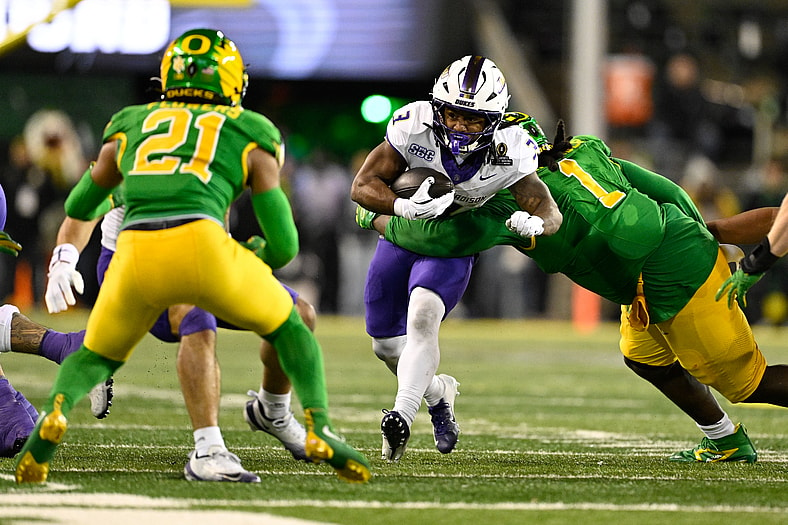
All-American running back Wayne Knight is one of the elite talents that Sun Belt Conference champion James Madison is losing to the transfer portal this week. While Knight is undersized, the junior is very explosive, and that was proven when he finished sixth in the nation for rushing yards with 1,373 yards.
He is evolving into an elite talent and could be a Heisman contender in 2026 with the right program. That’s why it feels like a perfect fit if he heads to Notre Dame to replace future NFL Draft first-round pick Jeremiyah Love.
Lincoln Keinholz to USF Bulls
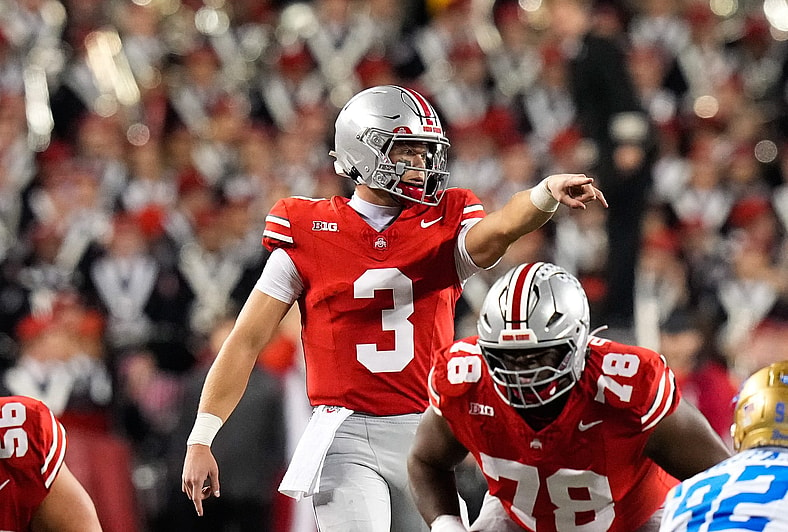
Following their devastating loss to Miami in the college football playoffs, backup QB Lincoln Keinholz was the first player to jump ship and leave Ohio State for the transfer portal. And it is understandable why, since he is stuck behind freshman Heisman finalist Julian Sayin.
However, he made Sayin work into the late summer to earn the starting job and has a reputation as a great locker room presence and leader. With offensive coordinator Brian Hartline headed to USF to be their new head coach, it would not be a surprise if Keinholz followed to be the new starting QB.
Sam Leavitt to Florida Gators
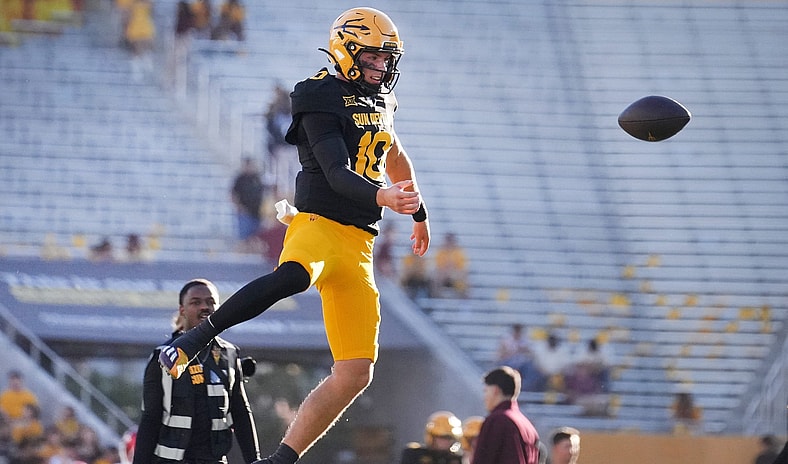
Entering the 2025 season, Arizona State signal-caller Sam Leavitt was seen as one to watch as he was primed for a big breakout season. However, a season-ending foot injury limited him to just seven games. Nevertheless, the sophomore is very smart with a football, has a good arm, and is strong at processing plays before the snap. Plus, he is also dangerous scrambling or tucking the ball and running.
With former Tulane coach Jon Sumrall taking over at Florida, look for the Gators to make a big splash by landing Leavitt.
Quintrevion Wisner to Baylor Bears
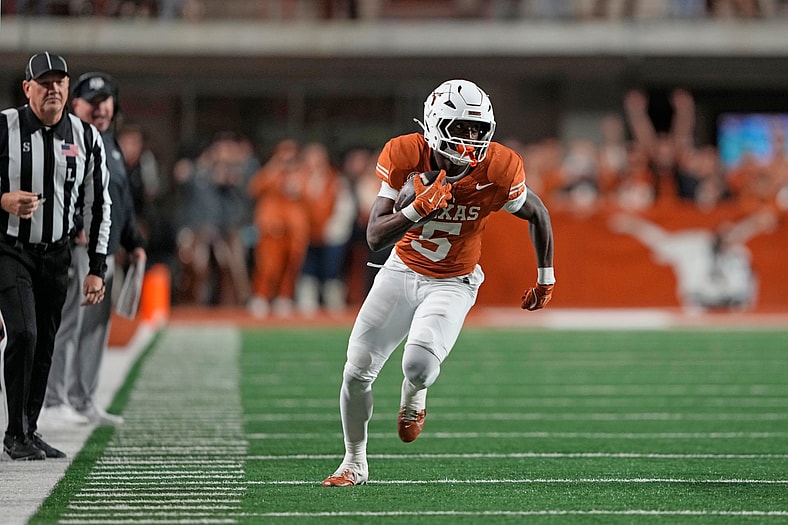
There has been a stunning mass exodus of Texas running backs into the transfer portal. The most notable of them is Quintrevion Wisner. The junior had a down season in 2025 as hamstring injuries limited him to just nine starts. However, in 2024, he posted 1,067 rushing yards, reeled in 311 passing yards on 44 receptions, and also had six touchdowns from scrimmage.
The Texas native is sure to draw interest from around the country. However, he will probably stay close to home again and will head to Baylor in the transfer portal.
Rocco Becht to Penn State Nittany Lions
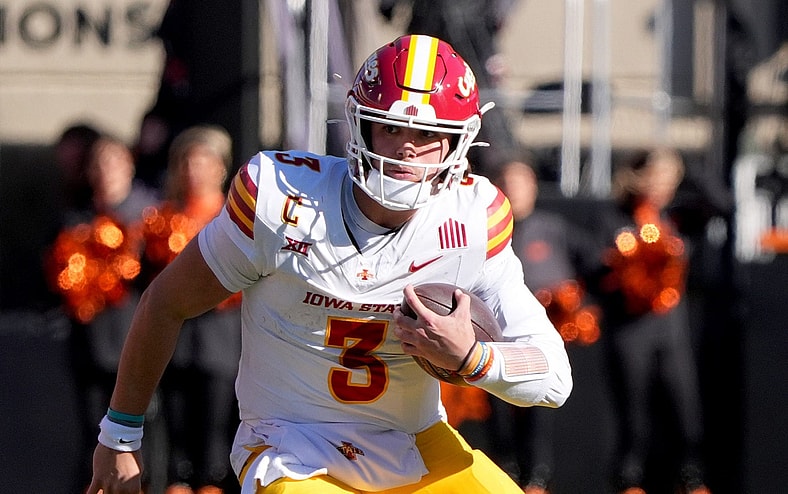
Iowa State veteran Rocco Becht regressed in year four. After posting career highs of 3,505 passing yards, 33 total TDs, and 318 yards on the ground in 2024, his numbers were down for an 8-4 Cyclones team. However, he is tough, gritty, and is good at extending plays.
While he is a little undersized for the position, doesn’t have a big arm, and he has some decision-making issues, he is a very talented player. With his Cyclones now overseeing things at Penn State, don’t be surprised if Becht reunites with Matt Campbell in State College.
Dylan Raiola to LSU Tigers
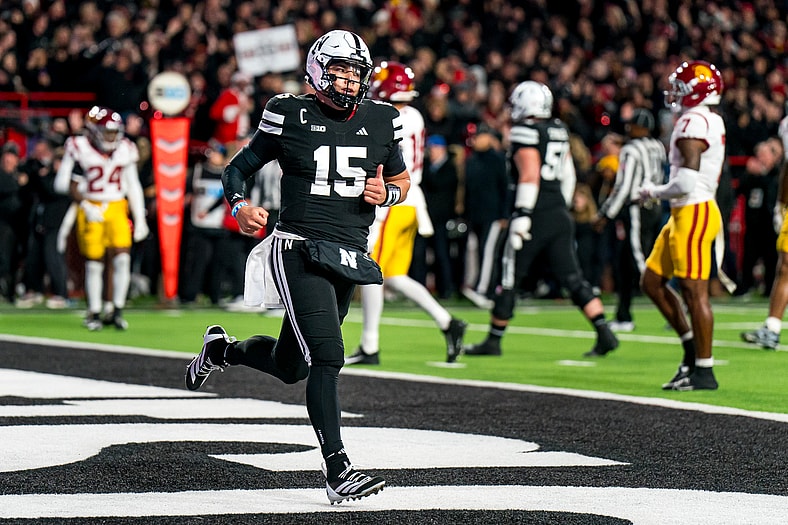
There was a lot of hype surrounding former five-star recruit Dylan Raiola when the hopes of Nebraska’s football program were foisted on his sizable shoulders two years ago. He has an NFL build, arm, and accuracy for the next level. However, he is a classic pocket passer who isn’t very mobile.
Nevertheless, with the right coordinator and QB coach, he has the potential to be a Heisman candidate in his final two seasons. With Lane Kiffin taking over at LSU, they are sure to make a big splash in the transfer portal. Raiola will be that major move.
Isaac Brown to Miami Hurricanes
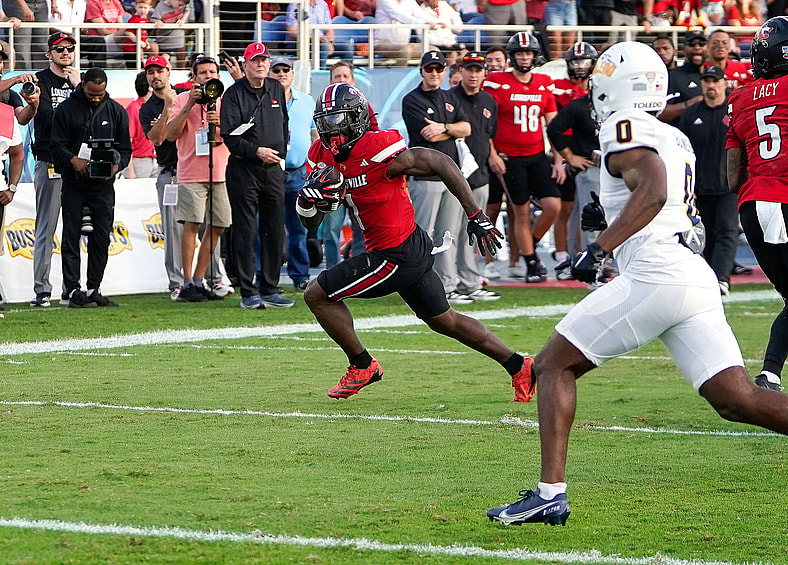
Stud Louisville running back Isaac Bown is one of the best RB’s in the latest transfer portal. He was limited to nine games in 2025 and rushed over 60 times less than the previous season because of a lower leg injury suffered in November. However, in 2024, he had a breakthrough season as he rushed for 1,173 yards and 11 touchdowns. His 7.1 yards per carry on 165 rushes was among the best in the entire nation among starting backs.
Considering his Miami roots, don’t be surprised if he heads to the Hurricanes to possibly replace Mark Fletcher Jr.
Drew Mestemaker to Oklahoma State Cowboys
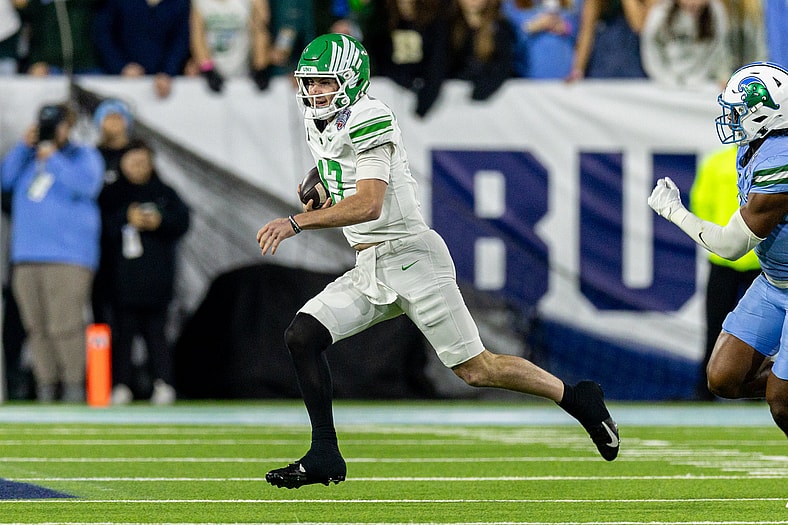
North Texas QB Drew Mestemaker had a huge season for the Mean Green in 2025. Leading the nation in passing yards with 4,129. That was over 400 more than the second-place finisher. He was also tied for second with 31 TD passes.
He could arguably be the best QB in the transfer portal. So he will draw a ton of interest. However, the current rumors suggest the Texas native is headed to Oklahoma State to play for new head coach Eric Morris. Who just so happens to be his former coach at North Texas.
Byrum Brown to Auburn Tigers
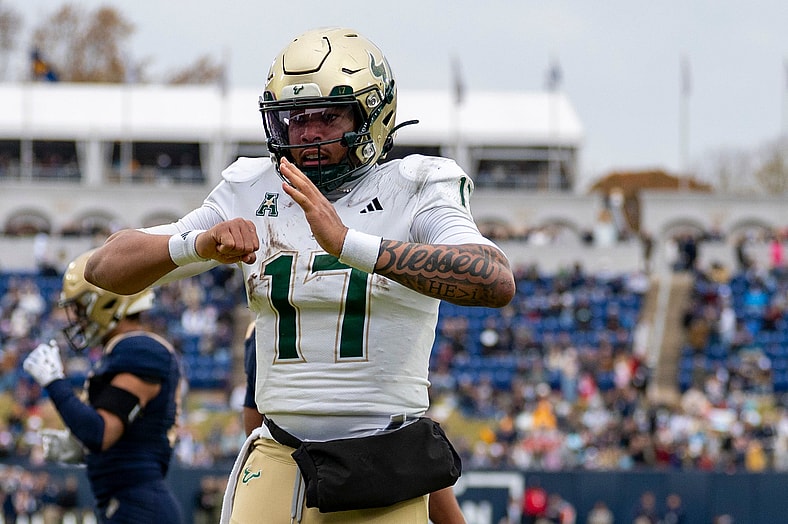
South Florida veteran Byrum Brown has a ton of potential if he can get into a program that maximizes his talents after four seasons with the Bulls. This past season, he led the team to a rock-solid 9-4 record. Throwing for 3,158 yards with 28 touchdowns and seven interceptions. But most importantly, he also ran for just over 1,000 yards in 2025.
With his former coach, Alex Golesh, taking over at Auburn, it would make sense if he followed him to be the new Tigers head coach.
Nick Marsh to Ohio State Buckeyes

Ohio State is sure to lose star receiver Carnell Tate to the NFL Draft after a huge breakout season in 2025. While receiver guru Brian Hartline is leaving the program, the Buckeyes will still hold a lot of appeal to stud receivers in the transfer portal. That is why the school replacing Tate with Michigan State sophomore Nick Marsh makes a ton of sense.
While his stats from his first two years don’t jump off the page, he has great size and potential. It is why he is seen as one of the best receivers in the portal. With Julian Sayin throwing passes to him in 2026, he could have a similar breakout year as Tate.
Cam Coleman to Texas Longhorns
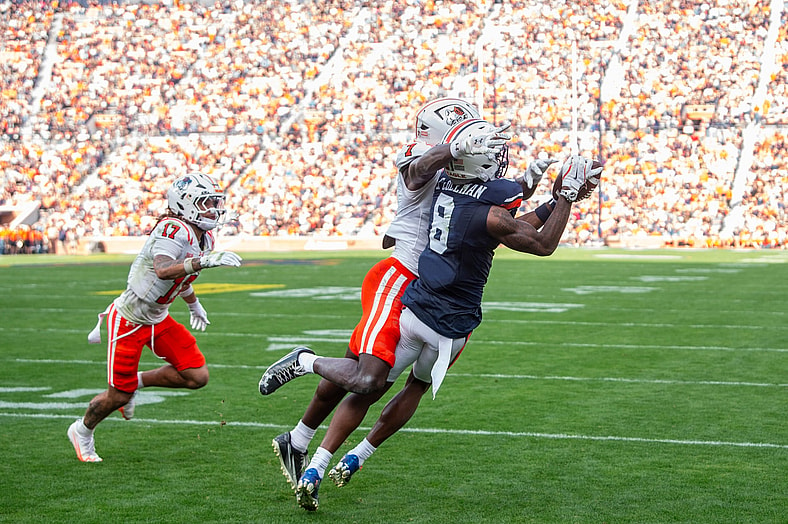
The Texas Longhorns emerged almost immediately as a top suitor for Cam Coleman after reports surfaced that he would enter the transfer portal. With the 6-foot-3 wideout prioritizing both NIL (reportedly a $2 million price tag) and the opportunity to play with a proven quarterback, there are only a few viable landing spots. Arch Manning recently reduced his NIL earnings from the school’s revenue-sharing pool to facilitate Texas bringing in more talent. Coleman will likely wind up in Austin, giving the Longhorns’ offense a true No. 1 wide receiver with both Manning and Coleman able to turn a great year into being top picks in the 2027 NFL Draft.
Related: Cam Coleman Transfer Landing Spots
John Henry Daley Heads to Michigan Wolverines
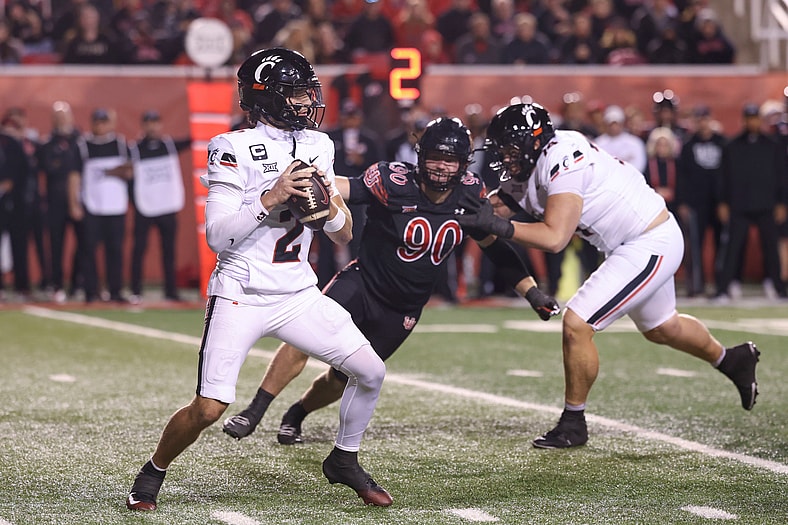
Since taking over as the Michigan Wolverines’ coach, Kyle Whittingham has been raiding the state of Utah for talent. After poaching BYU’s Jay Hill to take over as the Wolverines’ defensive coordinator, the duo can now turn their focus to luring elite talent out of the state. John Henry Daley, fresh off earning first-team All-Big 12 honors in 2025, is coming off a breakout year with 17.5 tackles for loss and 11.5 sacks in 11 games. The 6-foot-4 edge rusher would provide Michigan’s defense with a blue-chip pass rusher who could be even more impactful next season with Hill as his play-caller.
Caleb Hawkins Lands with Oklahoma State Cowboys
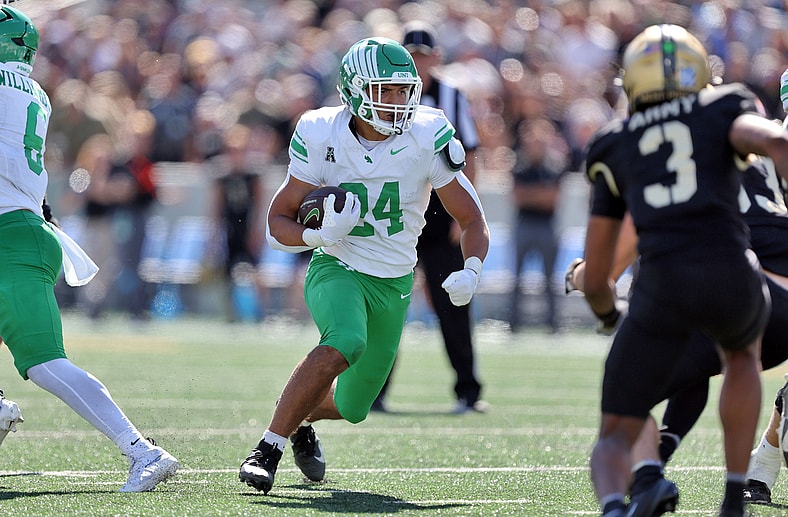
The raiding of North Texas will continue by former head coach Eric Morris. In addition to pulling in his former quarterback, Drew Mestemaker, Morris will bring his entire backfield to the Oklahoma State Cowboys’ offense for the 2026 season. Caleb Hawkins, the 6-foot-2 running back, earned first-team American Rookie of the Year honors in 2025 after putting up 1,804 scrimmage yards with 29 total touchdowns as a freshman. He will join the Cowboys’ offense and reunite with Mestemaker and Morris, even as Texas was reportedly focusing on another running back.
Chaz Coleman Returns Home to Ohio State Buckeyes
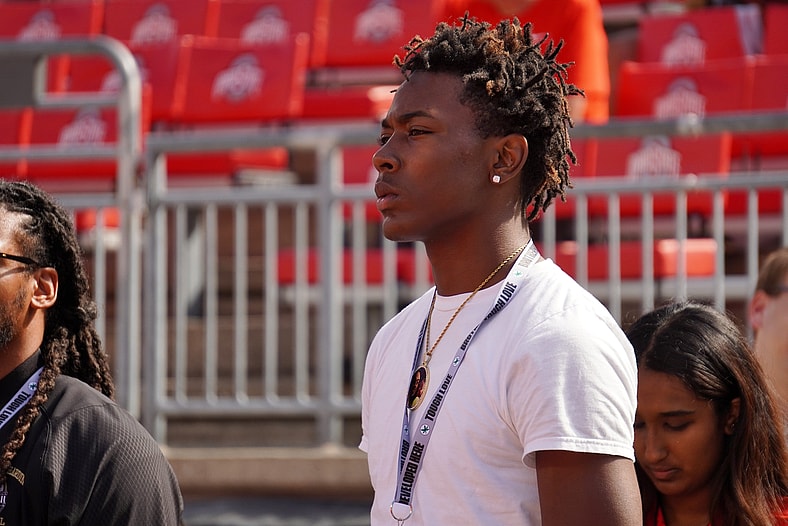
It is going to be a do-over for the Ohio State Buckeyes. Chaz Coleman starred at Warren G. Harding High School, but the Buckeyes seemed to pass him over, and that is when the Penn State Nittany Lions swooped in. Fortunately for Ryan Day and Matt Patricia, they get to correct their mistake after Coleman entered the college football transfer portal. While he only had 3 tackles for loss and 1 sack as a freshman, the 6-foot-4 edge defender stood out in his opportunities. The Buckeyes will bring him back home, and by 2027, he will be a first-team All-Big Ten edge rusher.
DJ Lagway to the Baylor Bears
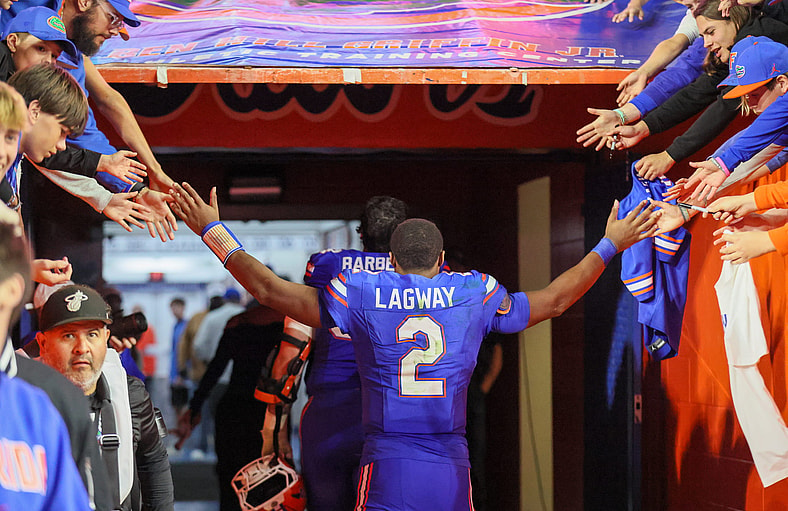
No one can fault DJ Lagway for trying to make it work with the Florida Gators, a program that could have positioned him for stardom. Unfortunately for him, things just did not work out. The young quarterback needs a change of scenery and would greatly benefit from going to a school where the expectations are more reasonable. The Baylor Bears offer that, and it would be an opportunity to play for the program his father did years ago. If all goes well, maybe we see a Lagway-led Baylor program in the Big 12 Championship Game next December.
Brendan Sorsby to Texas Tech
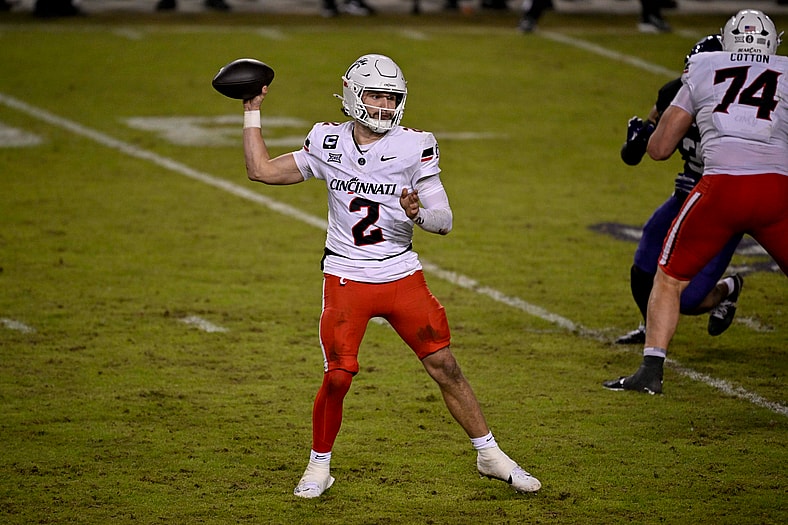
A brutal showing and exit in the College Football Playoff will likely push the Texas Tech Red Raiders to be even more aggressive in the portal for a top quarterback. While Cincinnati signal-caller Brendan Sorsby might not be on that Sam Leavitt tier of passers, he is not too far behind. Across his time at Indiana and Cincinnati, he has posted a 42–10 TD–INT line with an impressive passing touchdown rate, and he has rushed for over 1,300 yards and 22 touchdowns in his career. He is the caliber of dual-threat quarterback who can truly elevate the Red Raiders’ offense next season.
Read More: Staggering Cost Expected to Land Top QBs in College Football Transfer Portal
Rasheem Biles Joins Ohio State
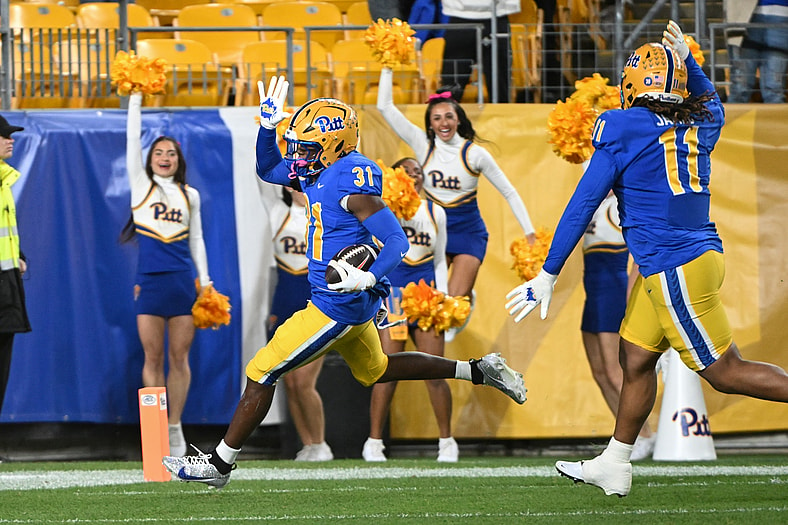
Yes, after losing in the College Football Playoff, we expect the Buckeyes to go all-out in the transfer portal. It also helps that one of the top defenders available, All-ACC linebacker Rasheem Biles, is an Ohio native who reportedly has real interest in playing for the Buckeyes. We anticipate that Ohio State will come out of January with several top defenders, bringing both Coleman and Biles back home.
Mateen Ibirogba Heads to Oregon
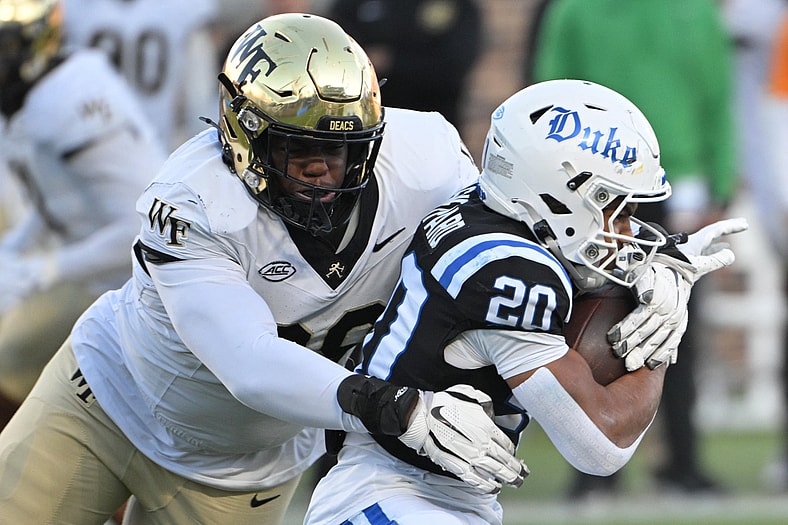
The Oregon Ducks’ defense is about to lose a lot of talent to the 2026 NFL Draft, including projected first-round pick A’Mauri Washington. Dan Lanning’s program has done an excellent job in recent seasons at getting defensive tackles to the pros, which is just another selling point they can offer to Mateen Ibirogba. Coming off a season where he was one of the most disruptive interior defensive linemen in the ACC, the 6-foot-4 standout can step in and become an integral part of Oregon’s defensive success next season.
Omarion Miller Heads West to USC Trojans
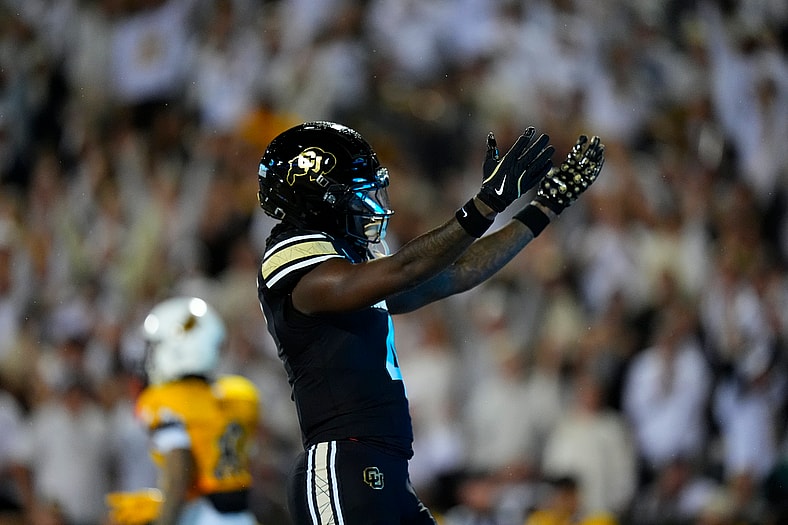
With Makai Lemon poised to be a top-20 pick in the 2026 NFL Draft, Lincoln Riley and the USC Trojans need to find a new No. 1 receiver. Cam Coleman would be great, but there are enough needs on the Trojans’ roster that it would probably be wise to spread the money around a bit more. Consequently, USC goes one tier down among the available receivers in the portal and will land Omarion Miller. He earned second-team All-Big 12 honors this past season, averaging an eye-popping 18 yards per reception with 808 receiving yards and 8 touchdowns. He will have a much better quarterback at USC, and functioning as the No. 1 wideout in the Trojans’ offense could propel him to becoming a top-50 pick next year.
Carius Curne to Ole Miss

With the money saved by not engaging in a bidding war for Lane Kiffin, the Ole Miss Rebels should remain major players in the college football transfer portal. We also suspect that with the hiring of Frank Wilson, the former interim coach at LSU, the Rebels’ new running backs coach will pull some of the elite talent out of Louisiana. Offensive lineman Carius Curne will likely turn down an opportunity to return home to Arkansas, instead taking a rewarding NIL deal to start on the Rebels’ offensive line next season.
NIL
Sugar Bowl Highlights: Ole Miss Knocks Off Georgia in CFP Sugar Bowl Thriller

Live Coverage for this has ended
11:45p ET
Ole Miss hits go-ahead field goal
11:09p ET
Ole Miss recaptures 3-point lead
11:07p ET
Ole Miss’ discipline leads to TD
10:38p ET
Georgia’s fake punt keeps drive alive
10:33p ET
Georgia returns fumble for a touchdown
10:32p ET
Kewan Lacy finds the end zone
9:18p ET
Gunner Stockton scores another rushing TD
9:12p ET
Georgia captures lead with first touchdown of the Sugar Bowl
9:07p ET
Ole Miss answers quickly
8:59p ET
Ole Miss kicker tops his own record
8:37p ET
Record-setting FG gives Ole Miss lead
Live Coverage for this began on 12:30a ET
NIL
Dengler Domain: College Football | News, Sports, Jobs
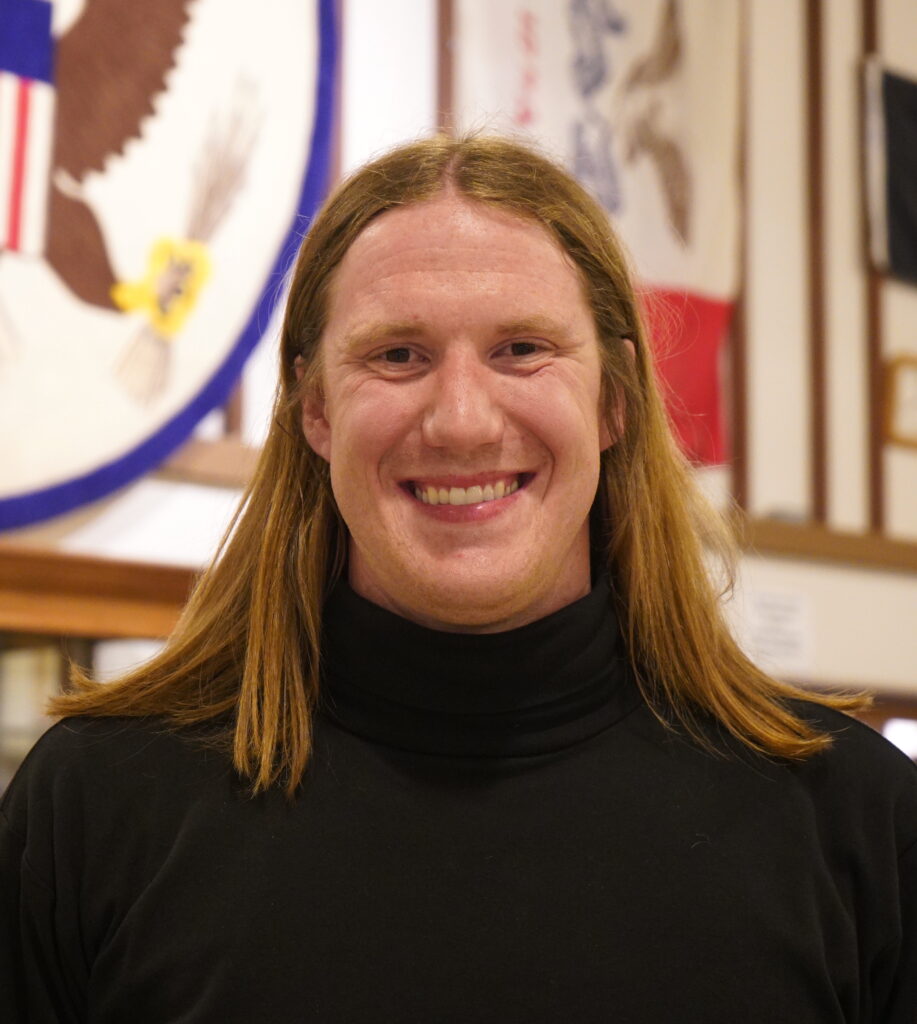

Sean Dengler.
College football is a mess. Talent is not worse, but something about the game feels off with where the sport is heading. The façade of being on scholarship was all which mattered did not make sense in comparison to when coaches started making lucrative salaries and athletic conferences began signing rich media rights deals. Being compensated for their time made sense, but the way they are being paid feels like the Wild West. With schools bidding on players, other athletes sitting out mid-season to transfer to a new team the next season, and athletes feeling like mercenaries, hopping from one team to the next.
NIL was supposed to have the athletes starring in a local car dealership advertisement. What has happened from the fan’s perspective is it feels like it has become easier to buy the best team. Using merit to succeed has fallen to the wayside while money solves the problems. This has left an unregulated, gross feeling hovering above college football. Change needs to come where athletes are paid their worth, but they also do not feel like mercenaries. The bond between players and fans from building a program instead of buying one is falling to the wayside.
The loss of regionalism in athletic conferences has also created friction. The Big Ten and the SEC started this trouble, but the ACC and Big 12 have also pushed to reach coast to coast while destroying a historic conference, PAC-12, in the process. If our grandparents’ generation found out the Hawkeyes were playing at Rutgers, and the Cyclones were playing at the University of Central Florida, they would roll over in their grave twofold.
This loss of regionalism and the mercenary aspect show the fractures Americans see in their society. Like the rest of society, and what has changed from the past is capital is king. College football has become about the bottom line. Athletes are quick to change their situation if met with a tiny bit of friction while universities sell out their fanbases to join conferences which make zero regional or numerical sense.
“Not falling behind” is the excuse given for why these decisions are being made. Change must happen because it is a different world. Society has seen this type of comment before in other parts of society. When it comes to agriculture, it was “go big or go home.” This has led to rural towns hollowing out, medical clinics closing, and churches and schools consolidating. This has all come in the name of “change was needed.” The only ones benefiting from the change are those hoarding the capital at the expense of the loss of the collectiveness everyone else enjoys from college football.
College football is also following the rest of the American economy where it forms a free market ensuring fair competition, minus athletes getting paid but this would work under the right conditions, to where a lot of markets like college football are less regulated and the one with the most capital has the best chance at succeeding. Whether having college football like this be the best for society does not matter because this is how the “market” is supposed to be. The big get bigger, the smaller get smaller, and those in the middle continue to hollow out.
Whether college sports, agriculture, or other parts of society, this is the current path. Until Americans decide to make markets about fair competition and not one decided by the few at the top, this problem will keep existing throughout society. The mess college football is in is a symptom of this bigger problem. To change, we all will need to fight for a better, more fair American society.
Sean Dengler is a writer, comedian, now-retired beginning farmer, and host of the Pandaring Talk podcast who grew up on a farm between Traer and Dysart. You can reach him at sean.h.dengler@gmail.com.
NIL
College football’s transfer portal officially opens Jan. 2. What to know about player movement :: WRAL.com
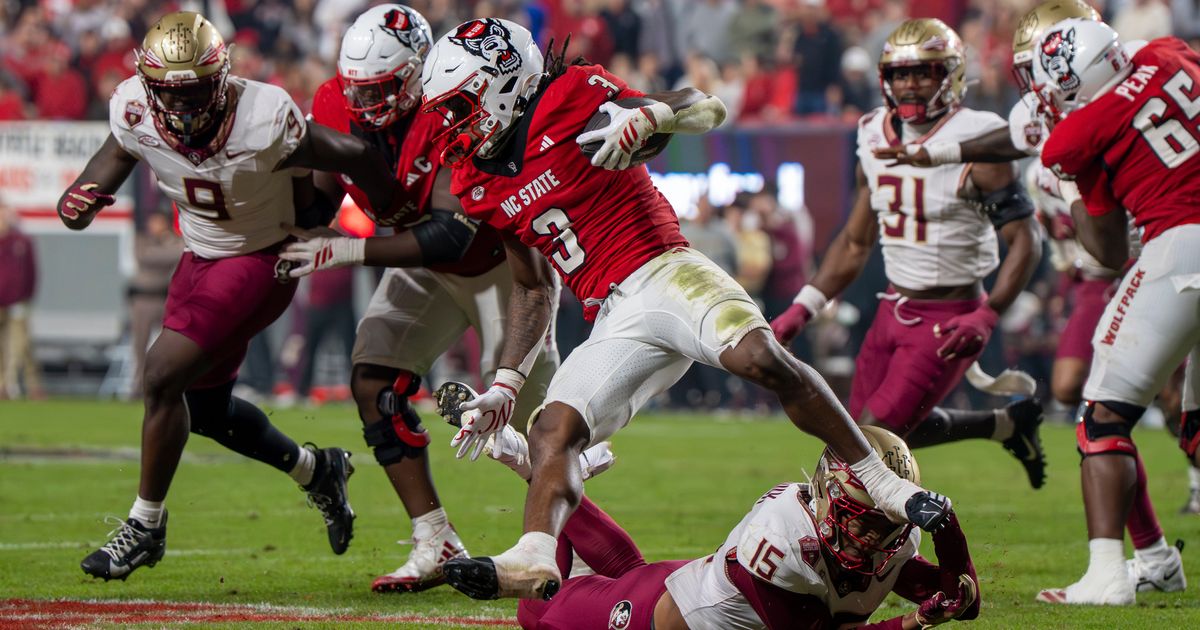
The college football season isn’t over yet and won’t be for several weeks, but the sport’s offseason, if you can even call it that, has been in full swing for quite some time — hirings, firings and players announcing they’re returning or leaving or heading to the NFL.
Many players already know where they’re headed, having worked out deals through agents with new schools. Everyone can begin making it official Jan. 2, the official start of college football’s transfer window.
Unlike in previous years, there is just one transfer window. Players will not have the opportunity to change teams later in the spring. The NCAA approved the change to a single window in October, hoping to bring a little more stability to the sport — if such a thing is possible in college football.
MORE: College football transfer portal tracker for Duke, North Carolina and North Carolina State
Although schools are limited to spending $20.5 million to directly pay athletes, the cost to lure and keep any individual player continues to rise, especially for quarterbacks. ESPN’s Pete Thamel reported that the market for top quarterbacks could reach $5 million.
Duke’s Darian Mensah was among the highest-paid quarterbacks this season, at a reported $4 million. Mensah, the ACC leader in passing yards and passing touchdowns in 2025, has said he would return to the Blue Devils for the 2026 season.
There are several high-profile quarterbacks who intend to transfer, including TCU’s Josh Hoover, Nebraska’s Dylan Raiola, Cincinnati’s Brendan Sorsby. NC State’s CJ Bailey could add to the list. High-profile programs like Indiana, Miami and LSU are in the market for quarterback transfers.
Despite the change to a single window, it’s not perfect. The portal is open from Jan. 2 to Jan. 16, while the College Football Playoff is happening. It closes before the national championship game. Players on those two teams can enter the portal from Jan. 20 through Jan. 24.
Players need only to enter the portal during the window. They don’t have to choose their school during that time. However, the school calendar plays a role if players want to participate in spring practice.
Players have been entering the portal – not a physical place, just a NCAA database — since the regular season wrapped up in late November.
More than a dozen North Carolina players, for example, plan to transfer from Bill Belichick’s program, including leading tackler Khmori House, standout defensive end Tyler Thompson and running back Davion Gause.
NC State running back Hollywood Smothers, an All-ACC first-team selection, skipped the team’s bowl victory over Memphis and plans to transfer or enter the NFL Draft.
Coaches signed new recruiting classes in early December without knowing exactly what spots they might need to fill.
“You take your high school class based on who you know is leaving the program, like we’ll do our seniors and things like that,” NC State coach Dave Doeren said in December. “That’s where the portal now has to supplement. You may have more attrition than you expected at a certain position and you didn’t sign as many high school players as you needed.”
Coaches led the push from the old system which had a transfer window in December (one of the busiest months of the calendar for coaches) and another in April after most programs completed spring ball. Some pushed for the single window to be in the spring, and the NCAA initially adopted a 10-day period, before extending it to 15 days.
“Every college coach would tell you that our calendar is just not in sync with the demands of what’s happening in our sport,” Doeren said. “We need to get our arms around that to make our jobs a little bit easier from a planning standpoint.”
The new single window does help with that. Rosters are locked in early in the year.
UNC made heavy use of the post-spring portal in 2025, after the mid-December 2024 hiring of head coach Bill Belichick, and lost several key players as well. Many programs have stopped holding traditional spring games, in part due to concerns that other coaches could scout those games and try to pluck players from their roster.
“The best thing about this year is that on Jan. 17, the portal will close and you’ll be able to build your team, knowing that when you go to spring ball, that is your team,” UNC general manager Michael Lombardi said. “Knowing that when you go through your offseason program, that is your team.”
-
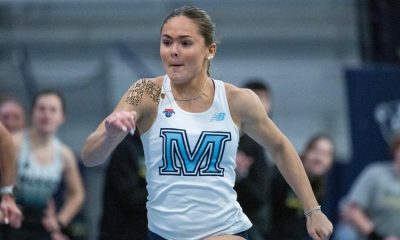
 Sports3 weeks ago
Sports3 weeks agoMaine wraps up Fall Semester with a win in Black Bear Invitational
-
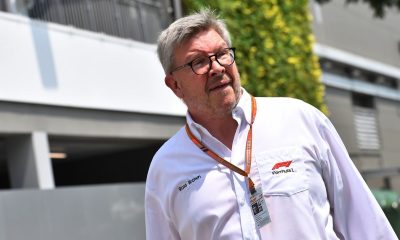
 Motorsports2 weeks ago
Motorsports2 weeks agoRoss Brawn to receive Autosport Gold Medal Award at 2026 Autosport Awards, Honouring a Lifetime Shaping Modern F1
-

 NIL3 weeks ago
NIL3 weeks agoNike Signs 10 LSU Athletes to NIL deals
-

 Rec Sports2 weeks ago
Rec Sports2 weeks agoStempien to seek opening for Branch County Circuit Court Judge | WTVB | 1590 AM · 95.5 FM
-
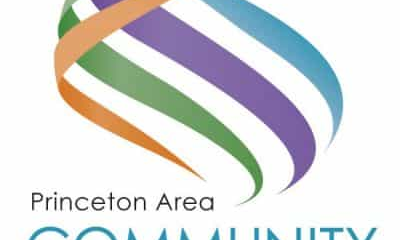
 Rec Sports2 weeks ago
Rec Sports2 weeks agoPrinceton Area Community Foundation awards more than $1.3 million to 40 local nonprofits ⋆ Princeton, NJ local news %
-
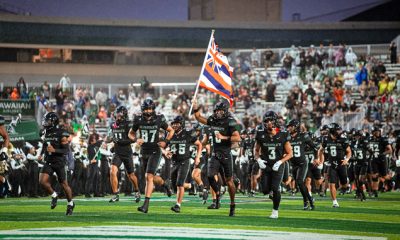
 NIL2 weeks ago
NIL2 weeks agoDowntown Athletic Club of Hawaiʻi gives $300K to Boost the ’Bows NIL fund
-

 NIL3 weeks ago
NIL3 weeks agoMeet The Two Oregon Freshmen Ready To Make Ducks History Under Dan Lanning
-
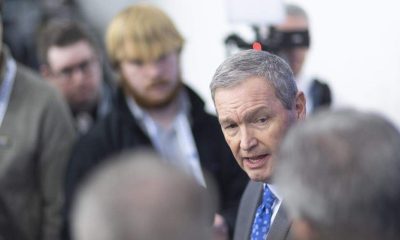
 NIL2 weeks ago
NIL2 weeks agoKentucky AD explains NIL, JMI partnership and cap rules
-

 Motorsports3 weeks ago
Motorsports3 weeks agoPRI Show revs through Indy, sets tone for 2026 racing season
-
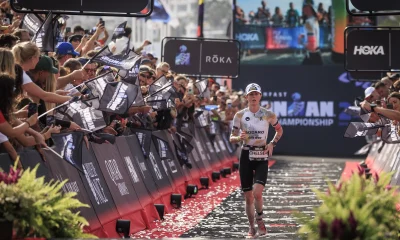
 Sports2 weeks ago
Sports2 weeks agoYoung People Are Driving a Surge in Triathlon Sign-Ups

































